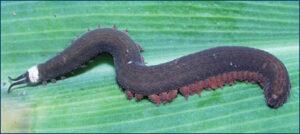(1804-1892)
English anatomist and student of Cuvier. Owen reconstructed the skeletons of many extinct animals, even working on some of Darwin’s specimens. He was, nonetheless, an early opponent of Darwin, arguing that God created new species by modifying a basic anatomical idea — an “archetype.” Later he modified his own views to accept a kind of “divine” evolution. Owen is also known for overstating the differences between the human brain and those of other apes in his struggle to place humans on a kind of pedestal, apart from the rest of the animal kingdom.
O
outgroup
A lineage in a phylogenetic analysis that falls outside the clade being studied. All members of the clade being studied will be more closely related to each other than to the outgroup, so the outgroup will branch off at the base of that phylogeny.
outbreeding
Mating between very distantly related individuals.
organism
Any living creature.
organic
Pertaining to compounds containing carbon. Also refers to living things or the materials made by living things.
onychophoran
Onychoporans (also known as velvet worms) share certain characters with arthropods, but are lacking a hard exoskeleton or jointed legs. Onychophorans are probably closely related to arthropods and branched off the tree just before a fully hardened exoskeleton and jointed legs evolved.

Onychophoran photo provided by Dr. Lynn Kimsey and the Bohart Museum of Entomology, University of California Davis
ontogeny
See development.
omnivore
An organism that eats both plants and animals (omni = all, vorare = to swallow up).
obligate trait
A trait in which the phenotypic expression of the genotype is not adaptive (i.e., the norm of reaction has not been shaped by natural selection). Obligate traits are those that are not facultative. Obligate traits rarely change once they have reached their adult form and generally produce similar phenotypes across a range of “normal” environments. For example, height, eye color, and blood type are all obligate traits. For more details, see our resource on genotype vs. phenotype in Evolution 101.
